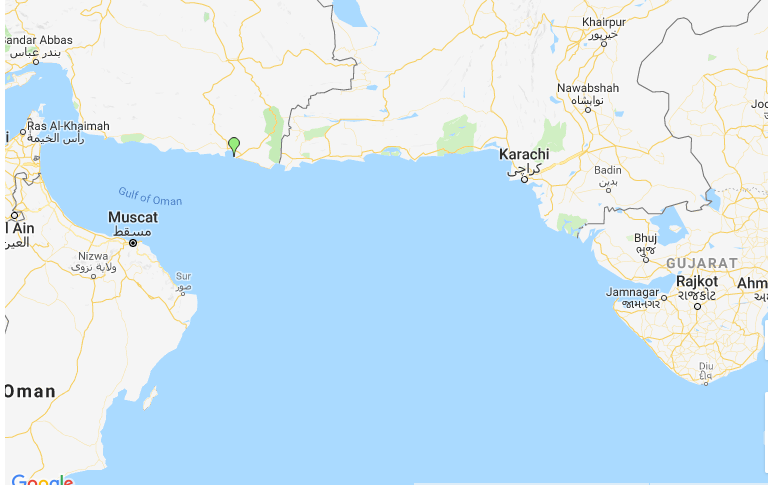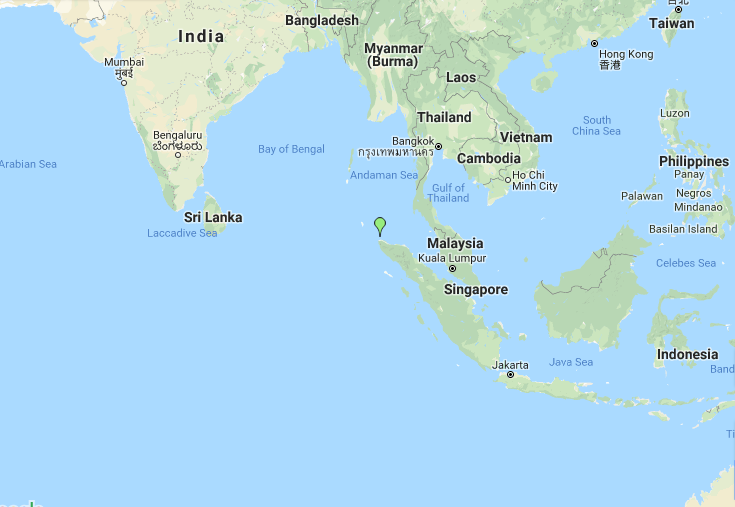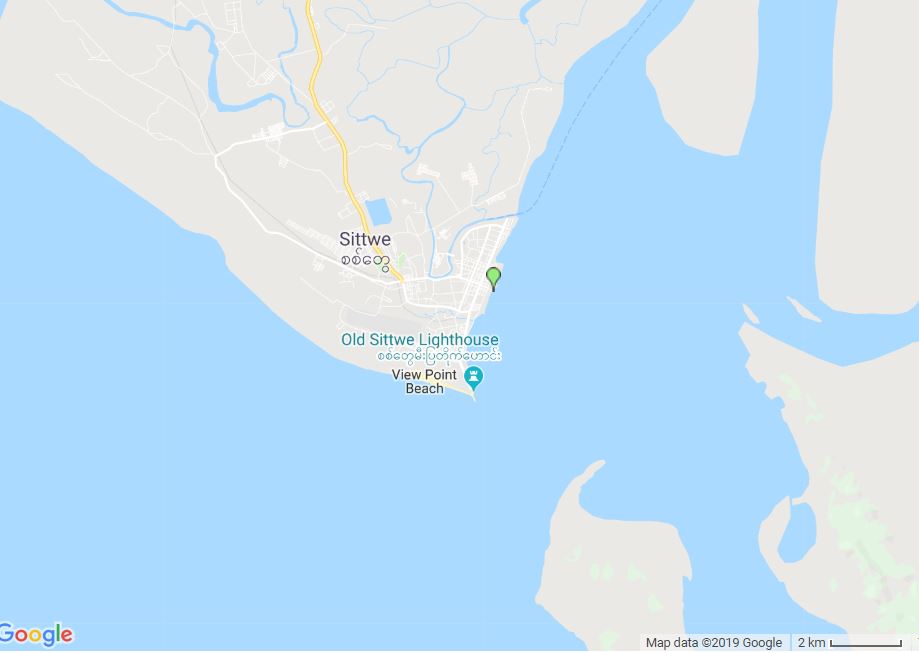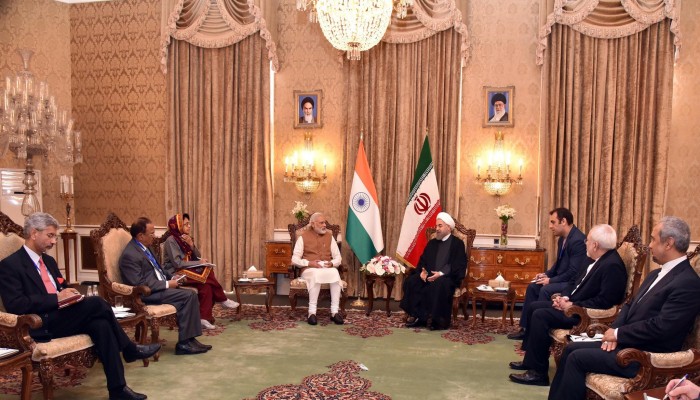India’s Sea Port Initiatives in Iran, Indonesia and Myanmar to Advance Its Geo-Economic and Geo-Strategic Interests
- In Foreign Policy
- 10:19 AM, Dec 04, 2018
- Mukul Asher
An integral component of India’s Blue Economy program which aims to utilize its coastline of 7500 km, involving 13 States and Union Territories, and 14500 KM of navigable waterways, and sea connectivity globally for more broad-based sustainable economic development, is India’s maritime initiatives abroad. (Read more about the Blue Economy program here)
This article examines India maritime initiatives in Iran and Indonesia, focusing on sea ports. They are consistent with its Blue Economy program.
Sea Port Initiatives with Iran
India, Iran and Afghanistan signed a trilateral agreement in 2016 to jointly develop the Chabahar Port, opening a new strategic transit route between the three nations and other Central Asian nations.

Location of the Chabhar port. Image Source: http://www.worldportsource.com/
The sea-port initiatives between India and Iran fit into a 7,200-km-long multi-mode network of ship, rail, and road route for moving freight between India, Iran, Afghanistan, Armenia, Azerbaijan, Russia, Central Asia and Europe, called the International North–South Transport Corridor (INSTC). Its northern parts are Astrakhan, Moscow, and Baku. Its southern end is Mumbai in India.
In 2017-18, bilateral trade between India and Iran was USD 13.8 billion. Iran exhibited a surplus of USD 11.1 billion. Iran is the third largest oil supplier to India, and hence a major source of its energy imports.
Bilateral trade between India and Afghanistan was USD 900 million in 2017-18. The plans are to raise it to USD 2 billion by 2020.
Under the agreement signed between India and Iran in May 2016, India is to equip and operate two berths in Chabahar Port Phase 1 with a capital investment of $85.21 million USD and an annual revenue expenditure of $22.95 million USD on a 10-year lease. (https://www.tolonews.com/business/another-wheat-shipment-afghanistan-arrives-chabahar) (Accessed on September 9, 2018
In February 2018, the India and Iran signed an agreement which gives New Delhi operational control of a section of the strategically located Chabahar port in the Gulf of Oman for 18 months.
The United States, exhibiting maturity in India-United States partnership, and strategic convergence of their interests, has granted waiver from its tough sanctions imposed on Iran in November 2018 to India for the development of Chabahar Port and a construction of railway line from the port city to the border of Afghanistan, and for shipment of non-sanctionable goods through the Port to Afghanistan. A SPV (Special Purpose Vehicle) involving two Indian ports will be involved from the Indian side in developing the port complex.
India has also been granted waiver by the US to continue to import oil from Iran, with some conditions. This enables India to continue its cooperation and payments arrangements with Iran concerning its exports of oil to India. If the two countries can reach an equitable agreement on barter trade, with India exporting agriculture and other goods, and services in return for oil, and local currency payments mechanisms, the bilateral economic relationship would be further strengthened.
The plans are to make Chabahar port in Iran fully operational by 2019. The port project also involves Indian participation in railway projects, one of which will connect Chabahar port with Zahedan in Iran.
The port has already been partly operational as indicated by India dispatching its first consignment of wheat via the Chabahar Port to Afghanistan in late October 2017. India’s seventh consignment of wheat to be sent to Afghanistan arrived in the Chabahar port in early April 2018.
As part of India’s development cooperation, about 110,000 tons of wheat from India bound for Afghanistan is to be transported annually to Afghanistan through Chabahar, From Chabahar, the shipments will be transported via road to Milak, a border city on the Afghan border. By 2018 (https://www.voanews.com/a/india-opens-new-afghan-trade-route-via-iran/4091915.html)
India-Indonesia Sea Port initiatives
Indonesia and India have recognized that as maritime neighbours, stronger connectivity, particularly sea links is needed. In 2017, bilateral merchandise trade between the two countries was USD 18.1 Billion, with Indonesia exhibiting a trade surplus of USD 10.0 billion. Indonesia is a source of key commodities for India, mainly crude palm oil and related products, coal, lignite, and wood pulp. The two countries plan to raise the bilateral trade to USD 50 billion by 2025.
The two countries have reached an agreement to provide India economic and military access to Indonesia’s strategic island of Sabang, which has a deep sea-port.

Location of the Sabang port. Image Source: http://www.worldportsource.com/
This island is located at the northern tip of Sumatra, about 500 KM from the entrance of Straits of Malacca. From an economic and strategic perspective, the Straits is one of the most important shipping lanes in the world. About a quarter of all oil carried by sea passes through the Straits of Malacca, mainly from Persian Gulf suppliers to Asian markets. About two-fifths of India’s trade passes through the Straits
Sabang is located 710 KM Southeast of India’s Andaman and Nicobar (A & N) Islands. The two countries are planning to achieve greater connectivity between India’s Andaman and Nicobar Islands and Indonesia’s Aceh province.
In 2016, the Indian government identified 26 Islands within A & N for promoting and implementing development based on sustainable approach. The government announced laying of submarine optical fibre cable between Chennai and A&N Islands so as to increase telephone and internet connectivity in the region by December 2018
In 2017, the A & N Island Development Agency (IDA) was established. It plans to focus on community-based tourism. Key Infrastructure projects such as creation of jetties/berthing facilities, Roll-on/Roll-off ships; bridges on Andaman Trunk Road; improved air connectivity projects are plan. As of June 2018, eighteen Projects, both in A & N and in Lakshadweep Islands, have been identified for implementation, out of which seven Projects are expected to be implemented through Public-Private Partnership method.
India is to invest in the port and in economic Zone at Sabang, and build a hospital. The Port has depth of 40 metres and can accommodate submarines.
The port related initiatives are expected to improve connectivity, lower transport and logistics costs, and widen economic interactions.
This agreement is part of India’s Act East Policy; and signals Indonesia’s commitment to strategic partnership with India in the Indian Ocean. It will strengthen Indo-Pacific relationships between the two countries. These initiatives also provide Indonesia and India a leverage on the Straits of Malacca.
India-Myanmar Sea Port initiatives
India has assisted with Kaladan multi-modal transport project in Myanmar. Its objective is to create a multi-modal sea, river, and road transport corridor for shipment of cargo from the eastern ports of India to Myanmar through Sittwee Port. It also will facilitate cargo movements to the north eastern part of India through Myanmar. This initiative could help improve bilateral merchandise trade relations which are currently about USD 3 billion.
India is set to assume responsibilities for operations at the Sittwee Port in the first quarter of 2019.

Concluding Remarks
India’s maritime initiatives, focusing on sea ports, with Iran and Indonesia, are consistent with India’s Blue Economy program to help generate broad-based sustainable development.
These agreements are also likely to assist in advancing India’s geo-economic and geo- strategic interests. Both Iran and Indonesia are major suppliers of commodities India imports; and both help India to strategically focus on vital sea and other transport corridors.
In the case of Iran, the agreement links with the INSTC, reaching Afghanistan, Russia, and Central Asia; and in the case of India it helps in deepening Indo-Pacific focus, and enables better monitoring of the Malacca Straits through with about two-fifths of India’s trade passes.







Comments